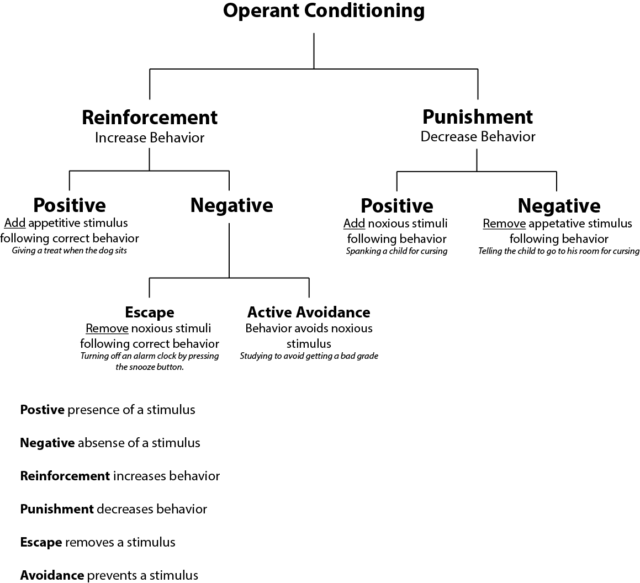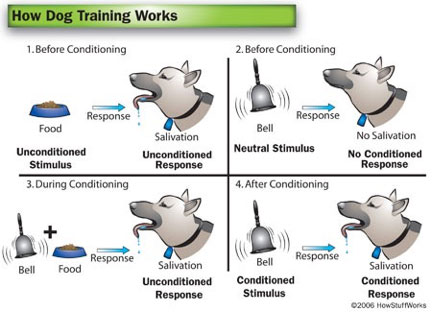A Dog With A Job (& A Loving Home) Is A Happy Dog!
Specialty Dog Training™ is an elite, family-owned training company run by award-winning dog trainers, based in sunny San Diego. We believe in creating an unbreakable bond and a trusting relationship between you and your dog through the use of positive reinforcement, interactive games, structure, consistency, proven and safe scientific training techniques, excellent timing, and understanding that each dog is in individual. We customize our training programs to fit your dog and your lifestyle and we train dogs of all ages and breeds. Our certified trainers specialize in all levels of obedience training and behavioral issues, service and therapy dog training, pre-trained family pets, protection, and detection dogs. Our promise is to provide you with the finest dog training available with our 5-star service and care. See our 5-star reviews on Google!
There are many ways to train a dog, just as there are many ways to raise a child, cook, or to learn anything new really. It is never our goal to discredit any other dog trainers’ methods or styles of teaching but rather to educate our clients that we believe our programs are individualized and balanced and that we chose this career path as dog trainers out of love and passion for improving the lives of dogs and their owners. With over 45 years of combined professional dog training experience, thousands of happy dogs and dog owners, hundreds of incredible working service dogs in the field helping their owners better navigate life, and having strong community ties with veterinary hospitals, rescue groups, breeders, other dog trainers and of course, our very own nonprofit, Shelter to Soldier. Our work is our life mission, and we are confident that when you choose to work with Specialty Dog Training™, you will not only be happy with your decision in choosing our company but you will enjoy the outcome of a truly well trained dog. We built our company from referrals because our clients are satisfied with their overall experience. Fill out this short form to engage one of our professionals in a free phone consultation and learn how we can help unleash your dog’s true potential!

All of our dogs learn to love to train because we make dog training fun! We utilize each dog’s individual strengths, genetic make-up, and natural desires to better understand them and guide them on a path to success. While dogs are our family members, we help bridge the gap of understanding that they are also still canines and not humans. Our philosophy follows the scientific behavioral principles of operant conditioning and classical conditioning. Reward-based training is and always will be the foundation of our philosophy. Outside of our teaching methods and styles, we also teach the importance of physical and mental stimulation and body language interpretation. Communication is key and when that is lost, your dog is lost.
Specialty Dog Training™ dog trainers teach new behaviors through luring, shaping, capturing, or molding. We are a balanced training company that puts a primary emphasis on reward-based training but we understand the need for clear boundaries as well. We do utilize training equipment to reinforce learned behaviors and assist in extinguishing behavioral problems. However, our dog trainers do not introduce any form of correction to a dog until we are completely certain the dog knows exactly what we are asking him to do. We will, however, introduce appropriate, humane, and scientifically proven methods of discipline when he makes a conscious decision not to perform the behavior we are asking for because the distraction is more interesting to the dog than the high value reward available. Often times, the distraction is a higher value, more self-rewarding item than what you have to offer. We simply teach your dog the importance of listening, no matter what that distraction might be. It is never our goal to correct a dog to make that dog feel bad or uncomfortable. The goal is to teach the dog to avoid negative behavior that in many cases, can be dangerous and even deadly. An example of this is a dog that bolts out of the house and runs into the street. A tragic number of dogs are hit by cars because of a breakdown in communication, unclear expectations, lack of consistency, and a lack of clear boundaries. We believe in helping keep your pup safe and happy. We also want you to achieve lasting results that allow you and your dog to enjoy each other to the fullest potential. Whether we are helping rehabilitate a dog with aggression that was deemed unsafe or helping get your dog to a point that he listens off leash so you can enjoy the beach, hikes, camping etc., we will guide you and your pup professionally, safely and with a fun positive outlook.
Methods explained:
Luring is a hands-off method of guiding your dog through a behavior. For example, a food lure can be used to guide a dog from a sit into a down. This is a common method of getting more complex behaviors. Lures are typically food, but they may also be toys, tugs, a target or anything else your dog will willingly follow. Understanding how to introduce and utilize a lure isn’t vey complex, but knowing how to properly phase out the lure is very important and the difficult part of luring.
Shaping new behaviors: A powerful tool that allows you to build a new behavior, step by step reinforcing small approximations of that behavior until you achieve your final goal. Each step represents a piece of the behavior and when your dog can achieve the first step, we gradually increase the difficulty and so on until the final goal is reached. This process is called reinforcing successive approximations.
Capturing: Capturing a dog behavior is a very effective method to utilize when training a dog. It requires the animal to “think” about the situation and it uses only behaviors freely offered by your dog. It also depends upon your patience and skill which is why our boot camp programs are often so effective. Our pros have excellent timing and patience to guide your pup. Basically, you will need to wait for your pup to do the desired behavior and then instantly reward it. The key is to have great timing, be very consistent and repeat this many times. Once we have successfully captured a behavior, we can then pair tit with a verbal or hand command. It is an amazing and fun process and likely one of our favorite styles of training.
Molding: Molding is physically guiding or otherwise compelling a dog to do a behavior. Pulling up on the dog’s collar while pushing down on his rear is a method of molding a sit. Molding also includes the use of physical props, such as working against a wall to force a straight heel or putting tape on the dog’s face to elicit a paw over the nose (as a trick). Molding has a bad reputation among some trainers. Although it includes techniques as innocent as heeling next to a wall to encourage the dog to move in a straight line, trainers, associating the method with force, often dismiss molding entirely. Unfortunately, by doing so they risk ignoring a method that could potentially make learning easier for their pet-owner students. Source: Melissa Alexander, mca@clickersolutions.com
Our team does not use molding as a primary method of teaching, however; we do use this tool as needed when we aren’t finding success using other methods. It is important to not be closed off to using one and only one type of training design when we know that not all dogs and not all behavior cases are the same.
Operant Conditioning:
The process of changing an animal’s response to a certain stimulus by manipulating the consequences that immediately follow the response. The five principles of operant conditioning were developed by B.F. Skinner. Clicker training is a subset of operant conditioning, using only positive reinforcement, extinction, and, to a lesser extent, negative punishment. It is a learning process in which the likelihood of a specific behavior is increased or decreased through positive or negative reinforcement each time the behavior is exhibited, so that the subject comes to associate the pleasure or displeasure of the reinforcement with the behavior.

Classical Conditioning:
Classical conditioning (also known as Pavlovian or respondent conditioning) is a learning process in which an innate response to a potent stimulus comes to be elicited in response to a previously neutral stimulus; this is achieved by repeated pairings of the neutral stimulus with the potent stimulus. The basic facts about classical conditioning were discovered by Ivan Pavlov through his famous experiments with dogs. Together with operant conditioning, classical conditioning became the foundation of behaviorism, a school of psychology that dominated psychology in the mid-20th century and is still an important influence on the practice of psychological therapy and the study of animal behavior. Classical conditioning is now the best understood of the basic learning processes, and its neural substrates are beginning to be understood.

Negative Punishment (P-):
When it comes to operant conditioning, “positive” simply means something is added, not that it’s good. This is a common misunderstanding. Punishment is utilized to decrease the chances of a behavior happening again.
Negative punishment is an important concept in B.F. Skinner’s theory of operant conditioning. In behavior psychology, the goal of punishment is to decrease the behavior that precedes it. In the case of negative punishment, it involves taking something good or desirable away in order to reduce the occurrence of a particular behavior. Many people and even professional dog trainers hear the term “punishment” and assume the dog is physically getting hurt regardless of what follows that term. In this case, the only hurt the dog is going through is not getting his treat, ball or the belly rub he wanted.
Positive Punishment (P+):
When it comes to operant conditioning, “positive” simply means something is added, not that it’s good. Punishment is utilized to decrease the chances of a behavior happening again. Therefore, positive punishment uses added stimulus to discourage your dog from performing an action for a second (or third, or fourth) time. An example would be using a noise stimulus (shaker can) or a leash correction.
Positive Reinforcement (R+):
The offering of desirable effects or consequences for a behavior with the intention of increasing the chance of that behavior being repeated in the future. Dogs learn good behavior by being rewarded for doing well. Providing your dog with a treat following a behavior is an example of using this method. Our team teaches new behaviors primarily with R+.
Negative Reinforcement (R-):
Removing something the animal will work to avoid to strengthen (increase the frequency of) a behavior. Heeling is commonplace for through R-. The dog receives a correction when he walks anywhere except in heel position. Walking in heel position increases, because that is the only “safe” place—because the threat of correction is removed by walking there. The key to R- is that an aversive must first be applied or threatened in order for it to be removed. Our team does not teach “heeling” using R-, we use luring as the foundation to teach the position and command and later will utilize R- if the need arises (remembering that each dog is an individual and training equipment and techniques will differ because of that).
Let us help you and your 4-legged family member. Contact us today to learn more!
